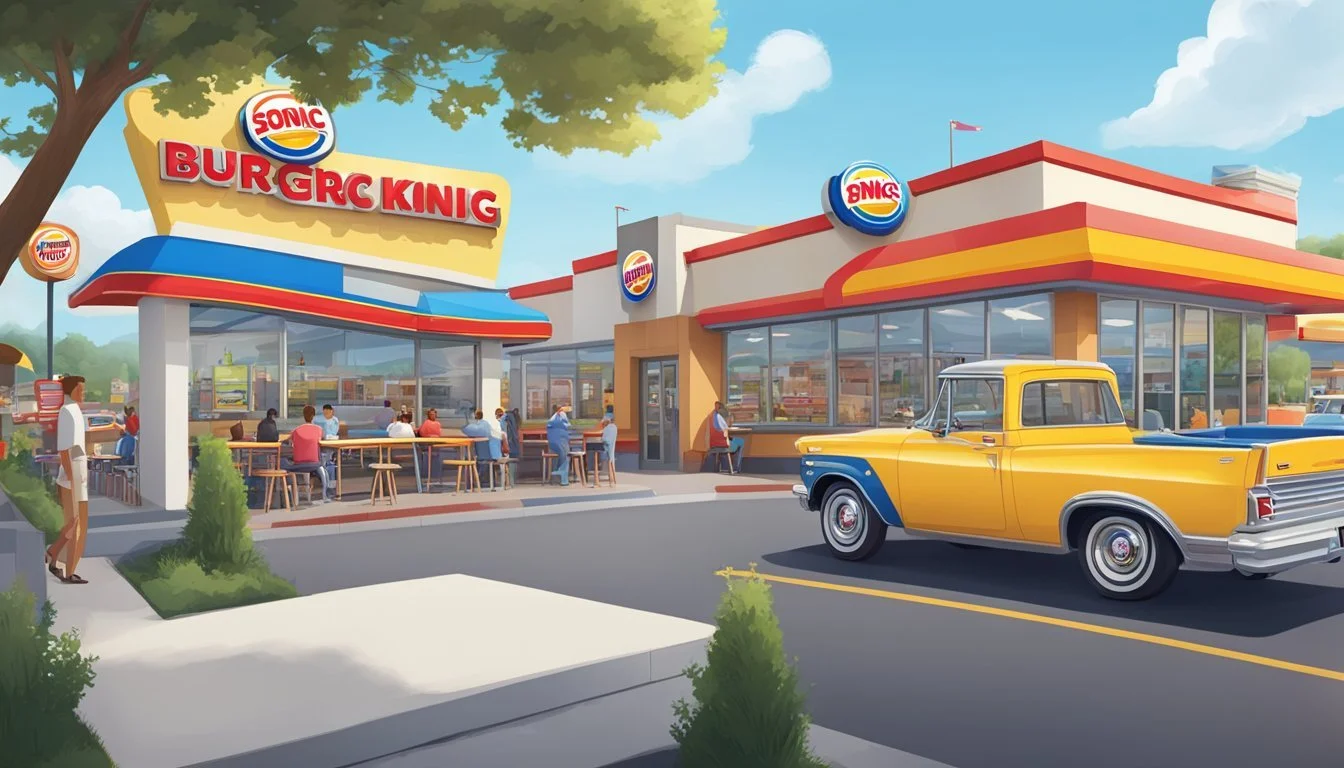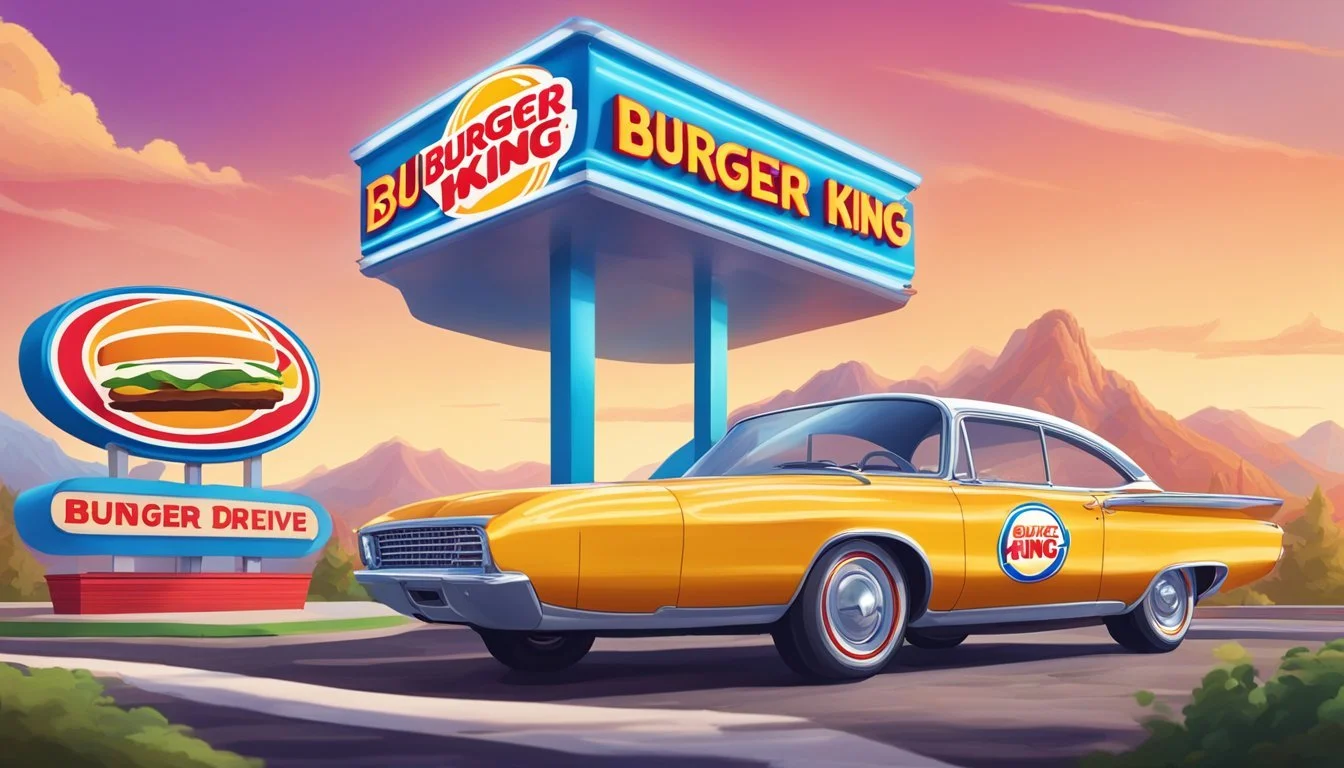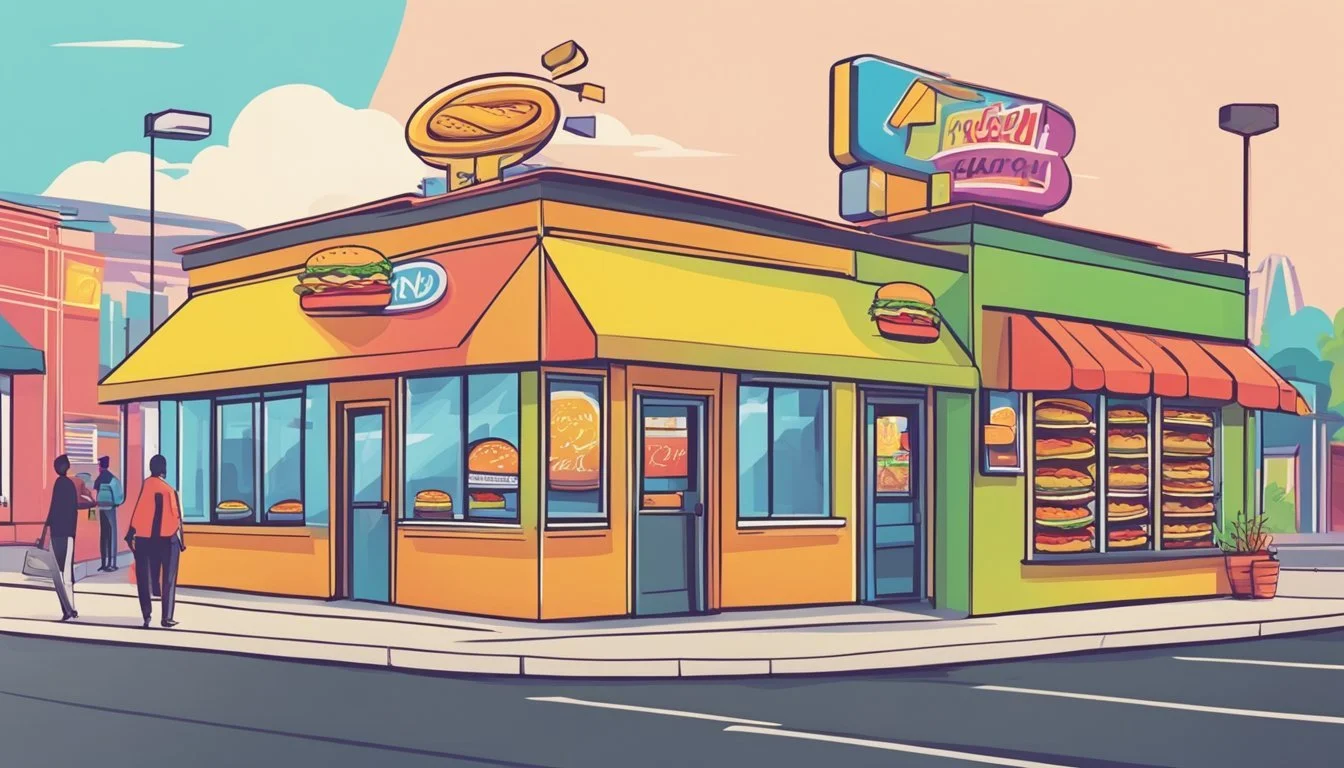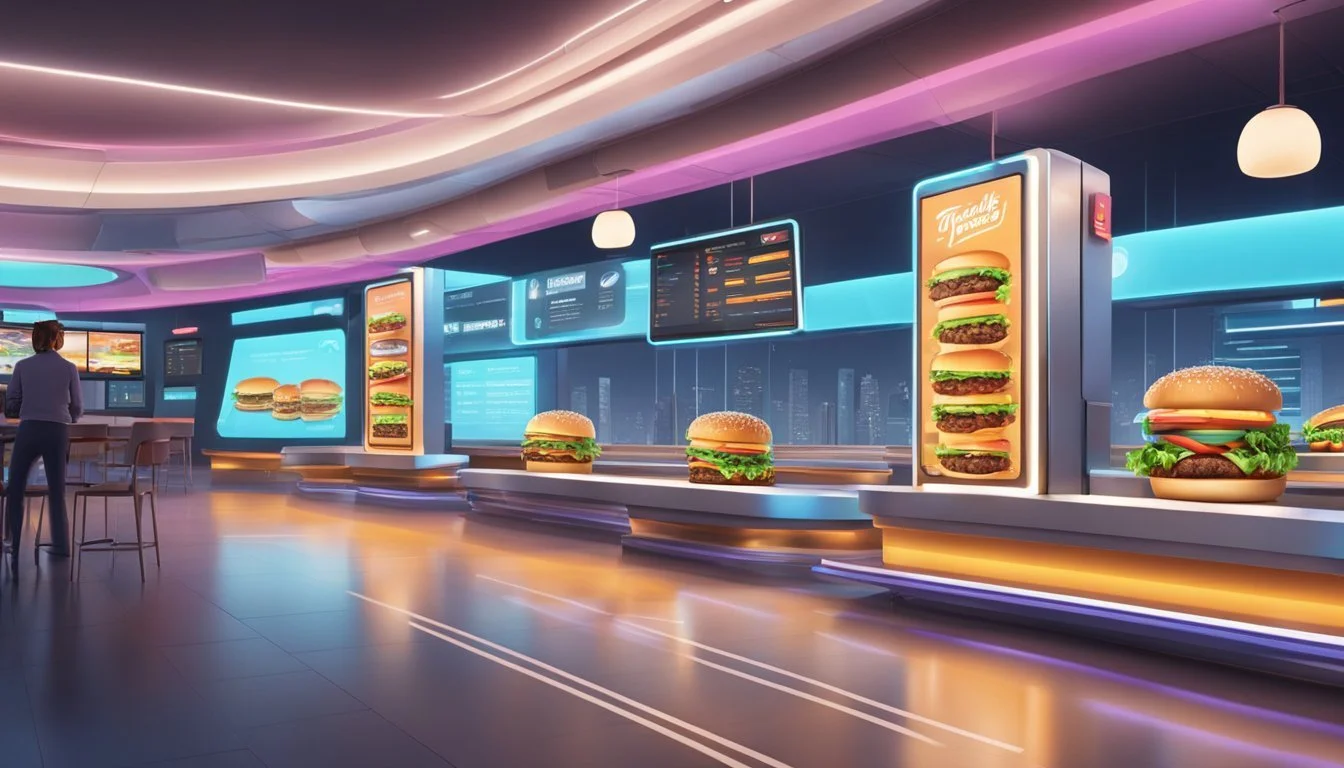Burger King vs Sonic Drive-In
Comparing Fast Food Favorites
When it comes to fast food, the seemingly simple task of choosing where to get a burger can spark intense debate among enthusiasts. Two popular options in the United States are Burger King and Sonic Drive-In, each offering a distinct dining experience and menu. Burger King, known for its flame-grilled burgers and the iconic Whopper, has established itself as a global giant with a presence in over 100 countries. It stakes its reputation on offering hearty, flavorful burgers that cater to a variety of tastes and preferences.
On the other hand, Sonic Drive-In offers a unique service model with its drive-in format, reminiscent of the 1950s. Customers can enjoy their meals delivered by carhops, often on roller skates. Sonic's burger patties are made from 100% pure, seasoned beef and they boast over 3,500 locations in the United States. Their menu is not confined to burgers alone, but an extended selection of fast-food staples, including a variety of sandwiches and sides, that provide a comprehensive casual dining experience.
The mission to determine which burger joint is superior depends on various factors including burger quality, menu diversity, service style, and the overall dining experience. Both Burger King and Sonic Drive-In have their loyal followings and have carved out their own niches in the fast food market. While Burger King emphasizes the taste of its flame-grilled selections, Sonic Drive-In draws customers in with its traditional drive-in setup and extensive menu options.
Historical Evolution of Burger King and Sonic Drive-In
Burger King, initiated as Insta-Burger King in 1953, rapidly evolved into a global fast food giant renowned for its signature offering, the Whopper. Initially starting with a simple menu including hamburgers, fries, and milkshakes, it revolved around the flame-grilling process that gave a distinctive taste to its burgers. Over the years, Burger King expanded both its menu and its geographic footprint, branding itself as a direct competitor to market leaders like McDonald's.
On the other side, Sonic Drive-In marked its beginning in 1953 as Top Hat Drive-In, in Shawnee, Oklahoma. Unlike the traditional fast-food layout, Sonic capitalized on the drive-in concept, harking back to the golden era of the American automobile. Customers enjoyed carhop service, which tied in well with the nation's burgeoning love affair with the car. Sonic's menu was comparatively varied from the beginning, offering more than the standard fare of burgers and fries.
As they grew, both establishments had cultural impacts and became ingrained in American fast-food culture. For example, Sonic popularized the use of roller-skating carhops, and Burger King became synonymous with National Cheeseburger Day due to its Whopper being a fan favorite.
Burger Joint Founded Notable Features Burger King 1953 Flame-grilled burgers, Whopper Sonic Drive-In 1953 Drive-in format, Diverse menu
Both eateries have adapted to changing consumer tastes and technological advancements while maintaining their foundational appeal. Burger King has integrated contemporary themes into its advertising, while Sonic kept the drive-in experience fresh with innovations like ordering via an app. The evolution of both chains underscores their resilience and adaptability in the competitive fast-food market.
Menu Offerings Comparison
The menus of Burger King and Sonic Drive-In feature distinct signature burgers, a range of toppings, assorted sides, and some vegetarian options, each presenting a different dining experience.
Signature Burgers
Burger King's claim to fame in the burger realm is its Whopper, a large hamburger consisting of a flame-grilled beef patty, ripe tomatoes, fresh lettuce, creamy mayonnaise, ketchup, crunchy pickles, and sliced white onions on a soft sesame seed bun. Sonic Drive-In, on the other hand, does not have a single iconic burger but offers a variety such as the Sonic Cheeseburger which features a beef patty with American cheese, onions, lettuce, tomatoes, and their special sauce.
Variety of Toppings
Toppings are an essential aspect of burger customization. Burger King allows customization with options like bacon, American cheese, red onions, and dill pickles. Sonic also offers a similar range including lettuce, tomatoes, mayo, ketchup, mustard, and pickle options, but adds the option for melted cheese atop the patty.
Sides and Extras
Both Burger King and Sonic Drive-In offer a selection of side items. Burger King is known for its crispy golden fries and onion rings. It also offers Mozzarella Sticks as per the search results. Similarly, Sonic provides its signature tater tots, along with traditional fries and onion rings. Their Mozzarella Sticks are a known staple as well, providing a direct comparison point to Burger King's Mozzarella offerings.
Vegetarian Options
For vegetarians, the options are more limited at both chains. Burger King has recently extended its menu to include items like the Impossible Whopper, incorporating a plant-based patty. Sonic's menu is less accommodating for vegetarians, with a focus largely on meat-based products, though cheese sticks and other non-meat sides are available.
Taste and Quality of Food
When comparing the taste and quality of food between Burger King and Sonic Drive-In, a discerning palate will notice differences particularly in the areas of ingredient freshness, flavor profiles, and signature offerings that differentiate each brand.
Freshness of Ingredients
Burger King prides itself on its flame-grilled burgers, which often carry the gentle smokiness indicative of freshly-cooked meat. Their whopper sandwiches are made with tomatoes and lettuce that aim to give a crisp addition to the burger experience. In contrast, Sonic Drive-In touts a variety of hamburgers and cheeseburgers with a focus on delivering an enjoyable diner-esque meal, with an emphasis placed on the overall freshness of their ingredients from the crispy lettuce to the ripe tomatoes.
Flavor Profiles
At the heart of Sonic Drive-In's menu is the range of flavor profiles. Their burgers often feature a blend of savory, tangy, and sometimes sweet notes, largely influenced by their assortment of condiments and cheeses, including American cheese. Burger King's flavor profile is grounded in the rich charred taste of their flame-grilled patties, complemented by their classic special sauce, ensuring a consistent and savory cheeseburger and hamburger that has been standardized across their outlets.
Unique Culinary Creations
Both chains strive to offer their own unique culinary creations. Burger King's menu showcases items like the Stacker, with its layers of patties, cheese, and bacon, and the classic Whopper, highlighting the simplicity of a well-constructed burger on a sesame-seed bun. Sonic’s creativity shines with their rotating selection of limited-time offerings, frequently each burger variation aiming to be a new take on the comfort food concept, incorporating different flavor combinations and toppings to their classic burger base.
Dining Experience
When comparing Burger King and Sonic Drive-In, the dining experience encompasses drive-thru service, unique carhop delivery, and the overall atmosphere and branding that each chain offers.
Drive-Thru Efficiency
Burger King has historically focused on drive-thru efficiency, utilizing technology such as mobile apps and testing automated ordering systems to provide customers with a speedy experience. Sonic Drive-In, on the other hand, also offers a drive-thru but couples it with an emphasis on its carhop service, which may affect its drive-thru speed.
Carhop Service
Sonic Drive-In stands out with its signature carhop service, where attendants deliver food directly to customers' cars, reminiscent of classic American drive-ins. This service provides a distinctive touch that differentiates it from Burger King, who does not offer carhop service, focusing instead on a more traditional fast food model.
Atmosphere and Branding
Both Burger King and Sonic Drive-In have cultivated their unique identities; however, they take different approaches to ambiance. Sonic channels a nostalgic drive-in atmosphere complete with carhop service and often includes a signature root beer on their menu. Burger King maintains a more typical fast-food environment, concentrating on quick service and the consistent presentation of their branding, recognized for their Burger King Crown and Whopper burger.
Value and Pricing
When considering the value and pricing at Burger King and Sonic Drive-In, customers typically look for affordable meal deals and beneficial pricing strategies that offer a good balance between cost and the quality of the menu items.
Meal Deals
Burger King offers a range of meal deals that often include a burger, a side such as fries, and a drink. These deals are structured to provide a complete meal at a lower price than purchasing items individually. For example:
Whopper Meal: Includes the iconic Whopper burger, medium fries, and medium drink.
Sonic Drive-In, known for its drive-in dining concept, similarly provides meal deals that combine their menu items, like burgers, tater tots, and drinks, which could be customized with various add-ons. An example of their meal deal is:
Sonic Cheeseburger Meal: Comes with a Sonic Cheeseburger, medium tots or fries, and a medium soft drink.
Pricing Strategies
Burger King employs a tiered pricing strategy, offering various burgers at different price points to cater to both budget-conscious customers and those willing to spend more on premium options. The hamburger starts at a low price point, whereas the Double Quarter Pounder with premium toppings like bacon and cheese is priced considerably higher.
Sonic, on the other hand, focuses on a customer-friendly pricing strategy with an emphasis on value through combos and during specific times of the day, such as their "Happy Hour" discounts. They position their menu to compete directly with other fast-food burger joints, constantly adjusting their prices and specials for competitive advantage.
Customer Satisfaction and Loyalty
In the competitive landscape of fast food, Burger King and Sonic Drive-In focus heavily on customer satisfaction to foster loyalty. Their strategies and their execution directly influence repeat business and brand reputation.
Repeat Business
Burger King has seen a positive impact on repeat business by implementing operational improvements and launching new marketing campaigns. These measures have been reportedly tied to an increase in sales and customer satisfaction levels. A robust repeat customer base is indicative of the success of their initiatives in maintaining customer interest and preference.
On the other hand, Sonic Drive-In aims at providing a unique customer experience through its drive-in format, offering services like carhop servers. While specific numbers about Sonic's repeat business were not provided, the fast-food chain’s distinctive service model plays a crucial role in driving repeat visits.
Brand Reputation
The reputation of a brand can be significantly influenced by the satisfaction of its customers.
For Burger King, efforts to improve the drive-thru experience appear to contribute favorably to their brand reputation. The company's focus on addressing customer pain points is a testament to its commitment to enhancing the service quality.
Sonic Drive-In employees have expressed varying levels of satisfaction with their CEO, which may reflect on the company’s overall brand reputation. The scores given by Sonic's employees have a potential impact on the customer experience and, consequently, public perception. The hands-on feedback from employees often translates to the level of service customers receive, which in turn shapes brand reputation in the consumer market.
Nutritional Information
When comparing Burger King and Sonic Drive-In, it is important to consider the nutritional content of their menu items, such as calorie counts and the availability of health-conscious options. This section will provide a clear, objective comparison based on these criteria.
Calorie Counts
Burger King offers a range of burgers, including their classic hamburger, which contains approximately 253 calories. This is relatively moderate in comparison to some of the more indulgent offerings. For example, at Sonic Drive-In, the Supersonic Bacon Double Cheeseburger with Mayo has a hefty calorie count of 1,140 calories. When deciding between the two fast-food chains, customers can find healthier calorie options by opting for simpler, less topping-heavy burgers.
Health-Conscious Options
Both Burger King and Sonic Drive-In provide choices for those looking to manage their calorie and nutrient intake. At Burger King, a customer can choose a grilled chicken sandwich, which is a leaner protein option compared to their standard beef burgers. Sonic Drive-In provides nutritional information to assist customers in making decisions that are suited to their dietary needs. When it comes to accompaniments like lettuce and tomato, both establishments offer these standard burger toppings, which contribute minimal calories and can add a refreshing crunch and flavor to the meal.
Environmental and Social Responsibility
When comparing Burger King and Sonic Drive-In in terms of environmental and social responsibility, both companies have made efforts to address these critical areas, although with varied strategies and outcomes.
Burger King has taken notable steps toward sustainability. The fast food chain's recent shift toward green packaging reflects an understanding of consumer demands for eco-friendly practices. These initiatives are part of a broader corporate social responsibility (CSR) program designed to align with stakeholder interests and enhance the firm's market share. Additionally, Burger King's foray into plant-based options, like the Impossible Whopper, aims to reduce environmental impact as plant-based diets are generally associated with lower greenhouse gas emissions compared to traditional meat production.
Sonic Drive-In, on the other hand, while not explicitly highlighted for green initiatives in the search results provided, is part of the fast food industry which is increasingly under scrutiny for environmental practices. As a key player, Sonic is likewise expected by consumers to engage in sustainable practices. However, without specific information, their efforts in this domain can’t be effectively compared to Burger King's publicly addressed strategies.
Burger King's CEO is encouraged to be involved in global sustainability discussions, suggesting a level of commitment to environmental leadership. Detailed information about Sonic's leadership in sustainability or CSR is not provided, which limits the ability to draw conclusions about their strategies or effectiveness.
It's important to note that both Burger King and Sonic Drive-In operate within an industry that significantly impacts the environment, from resource utilization to waste management. There is an ongoing need for greater transparency and commitment toward environmental and social responsibility within these organizations.
Availability and Accessibility
When choosing between Burger King and Sonic Drive-In, customers consider how easily they can access their favorite burger joints. This section explores the two chains' presence across the country and their service hours, factors that contribute to their overall accessibility.
Location Coverage
Burger King boasts a vast global presence, with more than 17,000 locations worldwide. In the United States, it has a significant footprint, ensuring that many Americans have a Burger King within a reasonable distance. On the other hand, Sonic Drive-In operates primarily within the United States, with a smaller but still substantial count of over 3,500 locations. While Sonic's drive-in format is less common, it offers a unique dining experience that sets it apart from the traditional drive-thru model of Burger King and other burger franchises.
Operating Hours
Both Burger King and Sonic Drive-In typically operate from early morning into the late evening, though hours may vary by location. Most Burger King locations open by 6:00 AM and close around midnight, making it an accessible option for both early birds and night owls. Meanwhile, Sonic's operating hours are often similar, with a typical opening time around 6:00 AM and closing time around 11:00 PM. However, some Sonic locations extend their service hours to cater to the late-night crowd, closing as late as 2:00 AM. Customers appreciate this flexibility, along with the convenience of Sonic's drive-in service, especially when grabbing a late-night meal.
Innovation and Future Outlook
In the competitive landscape of fast food, both Burger King and Sonic Drive-In are making strides in technology and menu innovation, aiming for greater convenience and customer satisfaction.
Technology Integration
Burger King is reimagining its restaurants with a "Restaurant of Tomorrow" concept, introducing triple drive-thrus and burger pickup lockers to expedite service and minimize contact. They also plan to implement solar paneled roofs for energy efficiency. Meanwhile, Sonic has long been recognized for its drive-in format, offering customers the novelty of carhop service. However, they continue to adapt by enhancing their mobile app capabilities for easier ordering and payment.
Menu Development
Both Burger King and Sonic are evolving their menu offerings to align with current consumer trends. Burger King focuses on innovative burger flavors and alternative proteins, catering to a broader range of dietary preferences. Sonic, traditionally known for its wide variety of drinks and slushes, also experiments with new food items regularly, ensuring they maintain a diverse and appealing menu.








